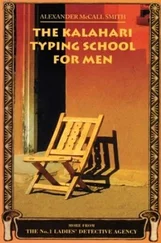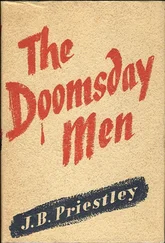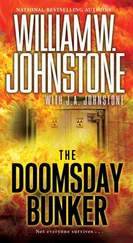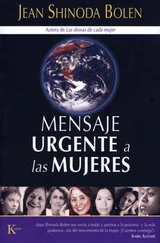High-energy electromagnetic radiation, such as X-rays, can punch electrons out of atoms. This results in atoms becoming electrically charged, a process known as ionization. Such ionized atoms can be highly unstable. In living tissue they can cause changes leading to serious genetic damage, illness and ultimately death. But X-ray injuries often take time to appear, and for many years the full dangers went unrecognized.
Dally worked with X-rays for several years with little or no protection. Initially he was helping Edison develop an X-ray light bulb for mass production. But when Dally’s hair fell out and he developed painful ulcers that refused to heal, Edison wisely decided that ‘it would not be a very popular kind of light’, and dropped the idea. 34However, Dally continued to work with X-rays, and it was not long before his radiation burns developed into cancer. Eventually, his left arm was amputated up to the elbow and his right removed up to the shoulder, but even these drastic measures failed to save him. He died in 1904 at the age of 39. In 1936 a monument was erected in Hamburg to the X-ray and radium martyrs. Initially only 169 names were remembered, but by 1959 that death toll had risen to 360. Although Röntgen’s name is not one of them, Marie Curie’s is.
While X-rays were celebrated by journalists, fiction writers highlighted the potential dangers of this new knowledge. Just weeks after the discovery of X-rays, a wonderfully grotesque short story called ‘Röntgen’s Curse’ was published in the popular Longman’s Magazine . Written by C. H. T. Crosthwaite, it tells how a scientist named Herbert Newton is determined to make a great discovery and be ‘hailed as the greatest benefactor of the human race in modern times’. Inspired by the possibilities of Röntgen’s ‘photography of the invisible’, Newton feels there’s ‘no limit to the power which might be acquired by one who could make the X-rays his servants, and compel them to obey him’. 35
Newton’s dream is to go far beyond what Röntgen achieved: ‘I would not rest until the physician should be able to see and examine any part of the human organism… as if he had the eye of the Creator.’ Like Mary Shelley’s Dr Frankenstein, Newton has Promethean ambitions: he dreams of ‘snatching from Nature the secret of life itself’. Newton becomes obsessed with this quest, shutting himself away from his family night and day in his laboratory, until finally the ultimate prize is within his grasp. 36
H. G. Wells’s classic ‘scientific romance’ The Invisible Man was published the following year. Griffin, the archetypal mad scientist, denies that his discovery depends on ‘these Röntgen vibrations’. Nevertheless, in order to make objects transparent by lowering their ‘refractive index’, he exposes them to ‘two radiating centres of a sort of ethereal vibration’. In a period obsessed with mysterious rays, some form of radiation had to be involved in Wells’s fantastic scientific experiment. The chilling description of Griffin watching his body gradually disappear is imaginable only in an age of X-ray photography. Griffin briefly becomes a living X-ray photograph, before vanishing altogether. 37
In ‘Röntgen’s Curse’, Newton exploits X-rays in an altogether different way. His great discovery is to invent a chemical that when dropped into the eye makes X-rays visible: ‘I was satisfied that I had made one of the most wonderful discoveries of modern times… I had in my grasp a talisman that would unlock for me the secrets of the universe. The fruit of the tree of knowledge hung within my reach. Ambition, desire, curiosity, tempted me. I must eat of it, even if the penalty were death, or worse.’ 38
But the moment Newton gazes on the world with X-ray vision he realizes that to see everything as if ‘with the Divine eye’ is truly terrible. Whatever he looks at, except metal, is now transparent to his gaze: ‘It was a ghastly and sickening sight to look down at my legs and body and see the bare bones of my own skeleton…’ But there is worse to come. As he sits down with his family for breakfast, the sight of them stripped of flesh threatens to drive him insane:
I was not ill, I was not mad. It was childish and foolish to be thus upset by the sight of the human frame. I reasoned with myself, and tried to conquer and overcome my disgust, but it was impossible. It was not merely that I saw my family in the form of skeletons sitting around me. The horror lay in the life of the skeletons. They were not like the dry bones in a museum of anatomy or in the valley of death. They looked fresh and clammy, and the skulls wagged and mouthed at me in a manner that made my skin creep with disgust to see them eating or pretending to eat, lifting the bony fingers to the gumless jaws, which they moved in the act of chewing. 39
This delightfully farcical moment brings the reality and horror of modern science into the genteel Victorian dining room. The chilling memento mori of the X-ray intrudes into the heart of that most sacred nineteenth-century institution, the family. Having made the discovery of the century, Newton realizes that he cannot even tell his wife what he has achieved lest she feels ‘outraged and offended that I should see her thus’. The advance of science is nothing compared to the sense of propriety of a Victorian lady. 40
Unable to reveal his triumph, Newton creeps dejectedly to his bed where gradually the effects of the chemical wear off. The scientist is forced to confront the result of his hubris. He has succeeded in making a real scientific discovery, but, unlike his illustrious namesake, Newton finds that he is not made of the ‘stuff of which the pioneers and heroes of science are made’. When, after several days, he recovers enough to leave his bed, Newton is almost relieved to find that his wife has cleared out his laboratory and converted it into a billiard room. 41
At the end of the nineteenth century, writers and scientists alike dreamed of the godlike power that nature’s secrets would give them. But X-rays reminded people of their own mortality: they were not gods after all, but mere flesh and bone. ‘Röntgen’s Curse’ exposes the flip side of science. Newton is appalled by the remarkable power he discovers; he even gives his secret discovery away. Wells’s invisible man also finds his discovery has unexpected and tragic consequences: Griffin is corrupted by the desire for scientific power and dreams of a rule of terror over his fellow man. Ultimately, invisibility brings him nothing but an early and violent death.
Stories of scientists obsessed by the desire for knowledge, heedless of house and home, were not new. They begin with tales of medieval alchemists, the first searchers for forbidden natural knowledge. Chaucer’s Canon’s Yeoman’s Tale (1387) is one of the earliest. Chaucer’s alchemist is, we learn, ‘to wys, in feith, as I bileeve… For whan a man hath over-greet a wit, / Ful oft hym happeth to mys-usen it.’ This moral has travelled down the centuries, being found in the many versions of the story of Dr Faustus, a real sixteenth-century necromancer and all-round rogue, as well as in Mary Shelley’s classic study of scientific arrogance, Frankenstein (1818). Knowledge reveals many wonders, but, as Herbert Newton and Wells’s Invisible Man found to their cost, it is a fickle genie, one who can turn on his master without warning.
Like ‘Röntgen’s Curse’, Honoré de Balzac’s novel of extreme chemistry, Quest for the Absolute (1834), cautioned its bourgeois readers that the secrets of nature can be gained only at a high cost to the individual scientist. By the end of the century, H. G. Wells’s Island of Dr Moreau suggested that the price of such knowledge might be the scientist’s very humanity. As we shall see, from Dr Moreau to Dr Strangelove is but a small step.
Читать дальше












